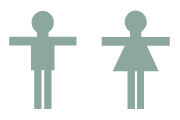
|
 Why is an emerging economy like India doing so badly on human development index? Why is an emerging economy like India doing so badly on human development index?
Even at 6.3%, India's growth rate could be a matter of envy for many countries. Still, the second-fastest growing economy in the world, India is worried about how to boost growth. But it's time the government began worrying about India's invisible underbelly, which is doing a lot of damage to the country's image.
In a damning report on the country's human rights record, released ahead of the UN review of India's human rights record two weeks ago, the Working Group on Human Rights in India and the UN has exposed our pathetic record.
The report blasts the government's economic policies for ignoring the poor. "The country's economic policies, driven by the neo-liberal economic paradigm, continue to perpetuate 'exclusion' and violate Fundamental Rights and Directive Principles of the Constitution," says the report, which is a scathing attack on India's performance on the human development index.
India ranks 134 out of 187 countries on UNDP's Human Development Index and 129 out of 147 countries on the Gender Inequality Index, behind Pakistan, Bangladesh and Rwanda. India has the worst child mortality sex ratio in the world. At the heart of India's skewered development story lies the paradox between India's phenomenal GDP growth and its abysmal score on human development.
"India is simultaneously the richest and the poorest of countries. While the country's wealth may have increased, there is no willingness to invest a part of it for a better life for the poor," says Harsh Mander, member of the National Advisory Council.
But poverty is not the only issue raised by the report. In addition to detailing custodial torture, the Armed Forces Special Powers Act and statesponsored militia such as the Salwa Judum, the report also looks at the violation of the right to food and housing.
"By mid-2011, India's urban slum population was estimated at 158.42 million," says the report, which also points to a survey which says around 42% of children under five are underweight and more than 59% are stunted.
India has for long, been unwilling to spend on education. The Right to Education Bill was in danger of being shelved on grounds that it was too expensive for the government.
India's low scores on human development have much to do with the absence of safety nets for the urban poor. "There are no entitlements for the urban poor; no urban equivalent of the National Rural Health Mission or the National Rural Employment Guarantee Scheme," says urban studies expert Gautam Bhan.
(2012-06-03/economictimes)
|





